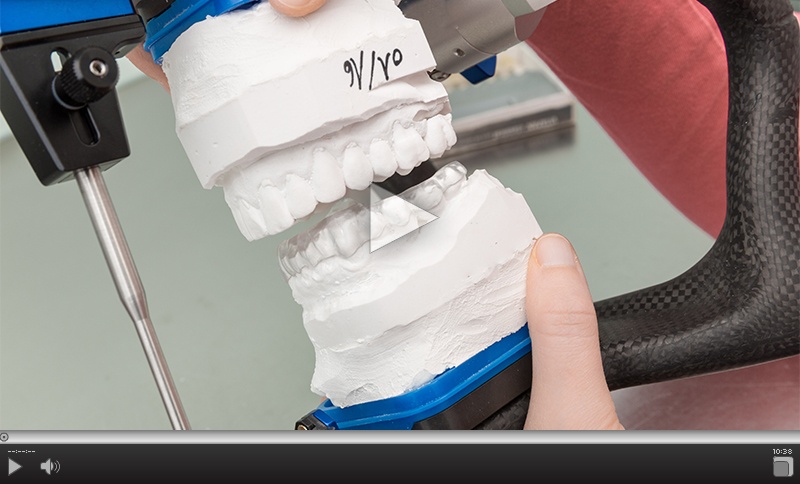In the absence of imaging, it is impossible to know the exact condition and position of the articular disc. However, we can often have a very close approximation through our clinical findings.
A more precise understanding of the stability of the joint affects our diagnosis and treatment protocols throughout occlusal and restorative therapy. In previous articles I wrote about the terms CR, ACP, CO and MIP. Now let's consider the usefulness of the term fully seated joint position (FSJP).

This term, and the joint position it represents, is being popularized by Piper and Mckee and helps to coordinate and simplify record keeping. Regardless of the condition and position of the disc, if we fully seat the joint and register an occlusal record without the teeth touching to deflect the mandible, we can then have a consistency in our analysis of mounted study models, CBCT and MRI.
Imagine the impact on orthodontics if you were to be able to determine exactly how to advance the mandible a very precise amount in a growing adolescent to reposition the condyle under a displaced disk? Besides actually knowing that there is a displaced disc.



Additionally, from a diagnostic perspective, the information gathered from your imaging becomes more meaningful with this consistency in records. For example, coordinating imaging in a defined position with your joint auscultation and clinical findings, you may be able to see alterations in the spatial relationships between the condyle and fossae on imaging that support your findings – or not. Either way, it assists you in developing a clearer mental picture of your patient's circumstances and prognosis.
Obviously there are as many different scenarios of application as one can imagine, and future articles will reflect these different clinical applications. However, in virtually all circumstances, the more clear and accurate a representation we have of the patient's condition, the better our diagnostic ability and subsequent treatment recommendations.
(Click this link for more dentistry articles by Dr. James "Jim" Otten.)
James “Jim” Otten, D.D.S., Spear Visiting Faculty and Contributing Author
FREE COURSE:
Managing Compromised Occlusions
Now that you've read about the articulator disc, continue to hone your skills with occlusion. In this free course, "Managing Compromised Occlusions," we will help you be prepared when occlusal compromise needs to be part of the solution.
WATCH NOW